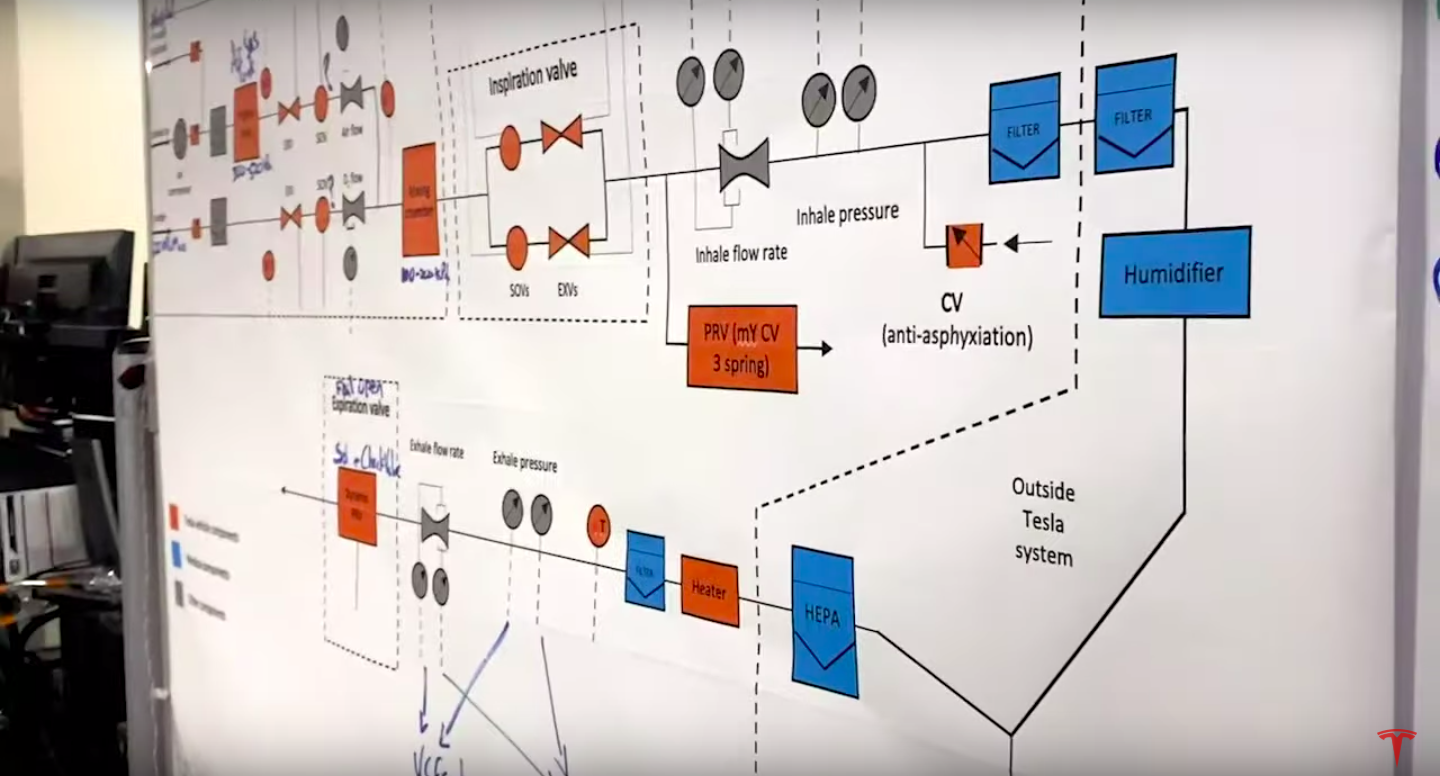Tesla has released a video that highlights the company’s ventilator manufacturing process, which incorporates parts from its all-electric vehicles.
The video update was shared via Twitter on Sunday and shows a group of masked Tesla employees, including VP of Vehicle Engineering Lars Moravy, working in an engineering lab. Company Engineering Director Joe Mardall outlined the company’s current process of development for the ventilators, which consists of a design that utilizes Tesla car parts. The use of parts has allowed Tesla to develop machines that can assist patients in breathing while infected with the virus, while not taking away from the amount of actual ventilator parts that exist right now.
The ventilator prototype uses a hospital-grade air supply system that feeds into a mixing chamber. This combines air and oxygen to create breathable air. The air then is pressurized and fed into tubes, providing a patient with air, which alleviates their breathing issues. COVID-19 is primarily a respiratory virus that attacks a patients lungs and breathing patterns.
Ventilators also have screens that provide medical professionals with information like tidal volume per breath, respiratory rate (which is usually set by a doctor to give a patient the proper amount of breathable air), and oxygen concentration. These figures will be displayed on a Model 3 dash screen powered by the vehicle’s infotainment computer and will show air pressure, airflow, and volume.
The shortage of ventilators across the United States is due to a low availability of the machines. Medtronic CEO Omar Ishrak has stated that his company has quadrupled the production of ventilators to combat the shortage. While this increased production rate has helped provide hospitals in need with additional machines, there is still a massive shortage of ventilators. Tesla plans to build its in-house breathing apparatuses with car parts as a strategy to “help out the medical industry without taking away from their supply.”

Mardall stated in the video that Tesla’s reliable car parts could help solve the shortage of ventilators as they are readily available and produced in high-volume. As ventilators remain to be a rarity in some locations of the world, Tesla’s influx of available car parts could solve a big part of the coronavirus issue, as there seems to be no ceiling on how many machines the company will be able to produce.
Tesla made plans to help with the production of ventilators in late March after CEO Elon Musk stated he had a conversation with Medtronic’s engineering team. Tesla’s team of engineers found that their company’s vehicle parts were more than capable of being used in ventilators. After Medtronic’s first Tesla-purchased ventilators arrived in New York City on April 3, the company has shifted its focus to ventilators. Vehicle production has shut down at the company’s Fremont facility and Tesla’s engineering team has turned its focus to the healthcare field. Its preparation of the first Tesla ventilator prototype is evidently well underway.
Watch the breakdown of Tesla’s ventilator prototype below.
[embedded content]

<!–
–>


